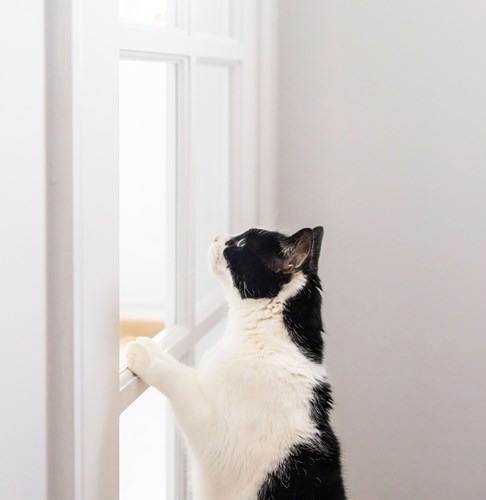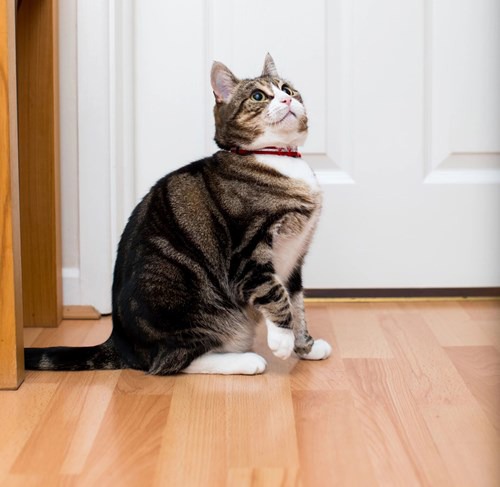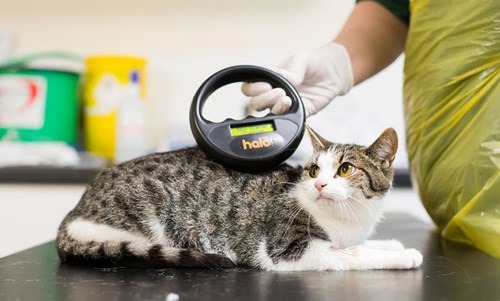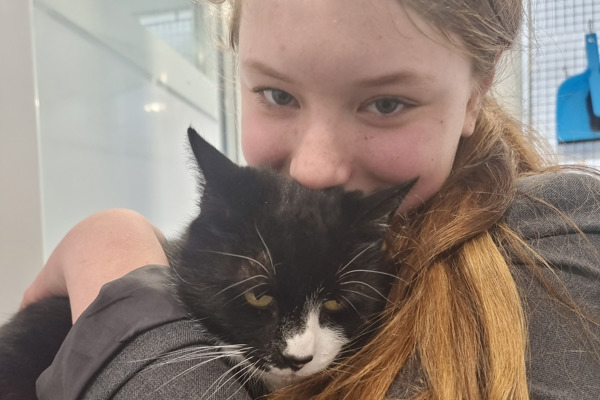Find out why even indoor cats should be microchipped, and why microchipping is safer than a collar, as we bust the top myths about cat microchipping
If you own a cat, you may have heard about microchipping and wondered if it’s really necessary for your kitty. With busy lives and tight budgets, it can be tempting to forget about this part of cat ownership and simply hope your cat never needs it. However, it’s really worth taking the time to consider getting your cat chipped, especially as it will soon be a legal requirement in England.
Microchipping gives you the best chance of being reunited with your cat if they ever get lost or stolen, providing you with peace of mind that you can be easily identified as their owner once they’re found. Around 71% of cats across the UK are already microchipped, so it’s a very common and safe procedure.
However, there are still around 2.8 million cats in the UK who are not chipped. When a stray cat who is not chipped, or has incorrect microchip details, comes into Cats Protection’s care, it takes us a lot of time to try and find their owner through other methods, and we may end up rehoming them because their owner cannot be contacted.
There are many benefits to microchipping, but there are also a lot of myths too, so let us bust them for you...
Myth: My cat is an indoor cat so doesn’t need a microchip
Even if your cat doesn’t normally go outside, there is always a risk that they could escape. Despite your best efforts to keep them in, mistakes can happen and they may slip out through a door or window that’s been accidentally left open. As they won’t be used to the great outdoors, they could easily become disorientated or get spooked and run far away from home, then struggle to find their way back. Microchipping will increase the chance of them being reunited with you.

Myth: My cat doesn’t go far and only roams our garden, so chipping isn’t necessary
Even if your cat usually stays close to home, there is a chance that something could scare them (perhaps some fireworks or another cat) and cause them to run away. If they end up in an area they’ve never been to before, they can easily get lost and struggle to find their way back home. Getting them chipped will make it more likely they get returned to you.
Myth: My cat has a collar so doesn’t need a microchip
While a collar featuring your contact details can help people get in touch if they find your cat, there are some risks involved. Some collars can cause nasty injuries to your cat if they get caught on something, so we recommend only using collars with a quick-release fastening. These will instantly come off if they get caught, preventing any injury, but will then leave your cat without a collar. Microchipping is a much safer and more permanent option, but if you choose to give your cat a collar as well as a microchip, find out how to choose a safe collar.

Myth: I don’t have to do it so why should I?
It’s true that, unlike for dogs, microchipping isn’t currently compulsory for cats in the UK. However, from June 2024 that will change. In England it will become law to have your pet cat microchipped if they are over 20 weeks old, so you will need to get them chipped to comply. We are currently campaigning for similar laws to be introduced in Scotland, Wales and Northern Ireland. Sign our petition to make microchipping compulsory across the UK.
Myth: Microchipping will hurt my cat
Microchipping involves a small microchip (about the size of a grain of rice) being inserted under your cat’s skin. It’s a very simple procedure that is no more painful for them than an injection, and there is no recovery time needed. They will be back home the very same day and soon forget the microchip is even there.

Myth: It’s not worth the effort and I don’t have the time
Getting your cat microchipped is a very quick procedure. You can get it done during your cat’s next appointment at the vets and take them home straight away afterwards, or you could get it done at the same time as getting them neutered. Getting your cat microchipped will be worth it if they ever go missing as you’ll know that if they’re scanned, you can be contacted.
Myth: My cat would be trackable and I don’t want that
A microchip might sound very high-tech, but it’s not advanced enough to allow your cat to be tracked as there is no GPS capability within the chip. Only when the chip is scanned using a microchip scanner will an identification number appear on the scanner screen. A vet or animal welfare charity can then use that number to securely look up your details on a database and contact you to let you know your cat has been found.

Myth: I got my vet to chip my cat so there’s nothing further I need to do
Once your cat has been microchipped, it’s your responsibility to contact the microchip company to register your details to the chip. Even if your vet has your contact details, they may not be able to do this for you. Without registering your details, the microchip is useless, so it’s important to do this as soon as possible.
Myth: I’ve updated my personal details with my vet, so they’ll update the chip for me
If you move house or change your phone number or email address, you will need to contact the microchip company to get your contact details updated. Your vet won’t be able to do this for you, so make sure you keep your cat’s microchip paperwork somewhere safe so you can update your details easily when needed.



